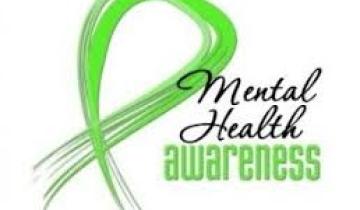Mental health has been a hot topic in the workplace for several years. Prior to the COVID-19 pandemic, the Department of Labor recognized a difference in the way mental health claims were handled and in 2019 the Mental Health Parity Compliance Act was passed. The act requires health plans to include coverage for mental health and to consider mental health diagnoses and treatment the same as other medical conditions.
There has been a long history of stigma tied to mental illness. Until recent years, it was seen as a weakness by many, the subject of jokes and harassment, and generally misunderstood. That is changing, due to legislative changes as well as increased awareness and compassion. Increased media coverage of violence and incidents tied to mental health have also triggered the response to address mental illness and recognize the signs before it leads to a situation that cannot be reversed.
MRA held the annual DEI Leadership Conference in May and one of the speakers was Shelly Chapman. Shelly is the Human Resources Director at Vera French Community Mental Health Center in Davenport, Iowa. Vera French is a community mental health facility consisting of a consortium of three nonprofit organizations. Each nonprofit takes part in the operation and success of the organization’s community-focused resources:
- Vera French Community Mental Health Center provides comprehensive services to over 8,000 members of the community each year. Included in their many services is providing school-based therapy to students.
- Rick’s House of Hope provides camp scholarships and group sessions to children.
- The Carol Center is Vera French’s community outreach program which provides programming, meals, and support.
- Vera French Housing helps provide affordable housing options and support to those living with mental illness.
During her presentation, Shelly shared the results of a recent study by the National Council for Mental Wellbeing, revealing that one in five adults has a mental illness in any given year, with 50 percent of chronic mental illness beginning in the teen years. Vera French’s goal in growing the Community Mental Health Center predates the survey but also helps demonstrate that this is not a new situation. In a recent interview, Shelly also shared the following additional information about recognizing the need for mental health conversations in the workplace:
Mental illness is defined as a condition that lasts two weeks or longer and often goes untreated, but there are signs, such as behavioral or physical changes, that can aid in recognition and lead to treatment. In the workplace, these signs are often overlooked or passed off as something else. For example, lost interest in anything work-related, becoming unmotivated, becoming unproductive, increased frequency of negative thoughts, and lashing out at co-workers may not be out of the ordinary for some employees, but if those behaviors begin to show in good to great employees, it should not be ignored. As we reflect over the past two years, we realize some of those signs existed.
Although employers need to be cautious in responding to these symptoms, there is a way to address them. Taking a compliant and compassionate approach is important, but not addressing the situation may seem unsupportive or uncaring. How many times have you heard an employee say, “They don’t care anyway?” Be empathetic and acknowledge there may be a situation. Be human and be genuine; after all, human is the first word of what we do, so be human.
Above all, if someone is giving you reason to think there is concern of a threat, don’t be afraid to act on it. Bullying, for example, can be overlooked as two employees not getting along, but if it becomes consistent, take it seriously. Pay attention to statements that could imply a threat, such as “I can’t do anything right and am going to kill myself.” Have the difficult conversations, be as nice as you can be, be humane, but address it.
Regular conversation and communication on the topic of mental health, with all employees, can help people become comfortable with the discussion. Eventually, it becomes just like any other conversation, so continue to talk about it. Encourage use of the EAP all year. Make it feel less like you are addressing a specific situation and more like any other conversation.
In some cases, an individual approach may be more appropriate. At Vera French, we focus on trauma informed treatment by looking at what has happened or what is going on rather than what is wrong with the employee or patient. By recognizing the underlying cause of the behavior, it is easier to identify the most effective type of care or treatment. Although it is not recommended that employers try to be therapists to employees, some of the same techniques can work in the workplace. When you recognize symptoms in an employee, engage in conversation. Let him or her talk. Silence can work well in these situations, so allow them to talk and get out what is troubling them. Offer FMLA or other time away to seek treatment, the same as any other disease or illness. There is a tendency to treat these situations differently because they are not physically recognized, but it is still a disease.
Another way to support employees is by providing resources. Share resource lists, including monthly recognition and community activities in the company newsletter or on the intranet. Share local opportunities and events and look for ways to encourage the sharing of information. Creating personal connections is also an invaluable resource. Getting to know the people in your organization creates a connection that helps employees feel comfortable talking with you and sharing, but also helps in recognizing when things don’t look right. Human Resources, supervisors, and leadership should be dialed in to the people they work with.
We also hear more about human resource professionals struggling with mental health issues, primarily since the pandemic has forced so many workplace changes. Stress, lack of sleep, feelings of constantly being overwhelmed, and several other factors contribute to an increase in human resource professionals experiencing the same symptoms as employees. Many are so overwhelmed with taking care of the needs of the company and others that they fail to recognize the signs in themselves.
The key is to be honest with yourself and recognize the personal signs—becoming overly critical of others, recognizing personal stressors, lacking interest in coming to work, and generally not feeling or acting like yourself. Take a moment to recognize them for what they are and take steps to address them. The response can be something immediate, such stepping away for a short walk or drink of water.
Doing anything to network can also help provide needed support. Events are happening in person again, so attend onsite when possible, and reach out to your network of people. Recognize that even if you don’t want to be with people, it’s important. Utilize the EAP yourself, which will also help in understanding that resource for helping others.
It’s important to know it’s okay to not be okay—nobody expects you to be 100 percent every day. Always strive to improve. Don’t dwell on the times you messed up and focus on what you can do to ground yourself.






